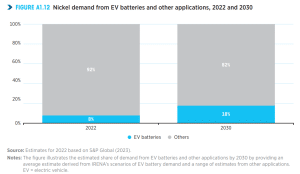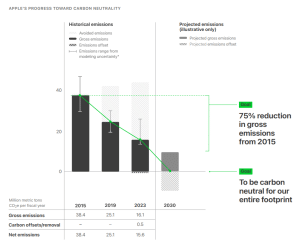
Puro.earth, the leading carbon-crediting platform for carbon dioxide removal (CDR), has issued over 1 million CO2 Removal Certificates (CORCs) since 2019. This represents 1 million tonnes of verified carbon removal. The company has played a key role in expanding the carbon removal market and advancing engineered solutions for climate action.
Reaching the first 500,000 CORCs took nearly five years, but the number doubled in just one year, reaching 1 million in Q1 2025. At this pace, Puro.earth expects to match this milestone again before the end of H1 2026.
How Does Carbon Dioxide Removal Work?
In carbon dioxide removal the CO2 from the atmosphere is pulled and stored securely in geological formations, land, oceans, or durable products. This is a natural process.
But with emissions still rising, CDR needs fast scaling up to make a better impact. There are two main types of CDR methods:
- Natural CDR: Includes afforestation, soil carbon sequestration, and ocean-based methods.
- Technological CDR: Includes Direct Air Capture (DAC), biochar, and enhanced mineralization.
Permanence is key in carbon dioxide removal. High-quality CDR credits must keep CO₂ stored for centuries or even millennia. This prevents it from being released back into the atmosphere. This is where Puro.earth is helping companies achieve their CDR milestones.
- In an EXCLUSIVE Discussion with CarbonCredits, Jan-Willem Bode, President of Puro.earth shared valuable insights on achieving this big milestone, meeting the highest environmental standards, and what’s next.
Read on…
CC: What factors contributed to the rapid growth of Puro.earth’s CO₂ Removal Certificates (CORCs) from 500,000 to over one million in just one year?
President Bode: Our growth is the result of three reinforcing factors:
- Low barrier to entry: Minimal upfront certification costs make it easy for suppliers to join the ecosystem.
- Scalable revenue model: CORC sales provide suppliers with capital to reinvest and expand operations.
- Methodology expansion: New methodologies unlock growth across multiple sectors simultaneously.
Moreover, this reaffirms the strong confidence in the market even while developments are still being made to the regulatory framework for engineering removals in general. These dynamics, combined with buyer demand, geographic diversification, and strong platform credibility, drive exponential momentum in high-integrity carbon removal.
CC: What are the implications of removing one million tonnes of CO₂ in terms of global climate goals, and how do you plan to sustain this momentum?
President Bode: Reaching one million tonnes of CO₂ removed is a significant milestone for Puro.earth and the carbon removal market as a whole. While it represents a small fraction of the reductions needed globally, it signals meaningful progress toward scaling high-integrity carbon removal in line with the Paris Agreement.
More importantly, it demonstrates that durable carbon removal is no longer a concept of the future — it’s happening now and at scale. We plan to sustain and accelerate this momentum by continuing to grow our network of high-quality suppliers, expanding access to global markets for carbon removal, and fostering strong demand from corporate buyers committed to net zero. With increasing interest from climate-forward companies and support from visionary entrepreneurs and investors, we’re on track to issue our next one million CORCs by mid-2026.
Furthermore, we are seeing several important initiatives from our partners within this context. These initiatives focus on creating more liquidity in the market in the short term and more standardization in the medium term.
CC: How does Puro.earth ensure the integrity and quality of the carbon removal credits issued through its platform?
President Bode: Puro.earth ensures the integrity and quality of its carbon removal credits through a science-based, transparent, and independently verified approach. Each CO₂ Removal Certificate (CORC) is issued according to methodologies grounded in robust quantification techniques, designed to meet the highest standards of environmental integrity.
Our methodologies are developed and continuously reviewed by an independent Advisory Board composed of leading scientists, academics, and carbon removal experts – including Advisory Board Chairman Professor Myles Allen, co-author of the Oxford Principles for Net Zero Aligned Carbon Offsetting, Oxford University. These methodologies set the criteria for what constitutes permanent, net-negative carbon removal.
Puro Registry Tracks Carbon Removal
Based on President’s insights, we explain the process further below:
The Puro Standard: Certifies suppliers that remove carbon dioxide from the atmosphere and store it for at least 100 years. It then issues CORCs and records them in the transparent Puro Registry.
The Puro Registry: It is transparent and shows active CORCs and the projects behind them. When organizations retire CORCs, they use them to support net-zero or carbon neutrality claims. Each CORC represents one metric ton of long-term CO2 removal.
They use CORC100+ and CORC1000+ labels to indicate estimated storage durability in years. However, these labels only provide general guidance rather than exact retention periods. Before December 2022, all CORCs carried a single label, regardless of storage duration.
Furthermore, independent auditors verify each project every year to ensure compliance with Puro Standard’s science-based methods.
Scaling Carbon Removal with Proven Methods
Puro.earth pioneered carbon removal certification for biochar, carbonated materials, biomass storage, enhanced rock weathering, and geologically stored carbon. These methods capture CO2 using Direct Air Capture (DAC) and Bioenergy with Carbon Capture & Storage (BECCS).
Unlike traditional carbon offsets, which focus on reducing emissions, CORCs represent direct carbon removal. The Puro Registry updates its data daily. However, it only releases data from before January 2022 if both parties agree. Beneficiaries can request a delay in publication, but only for up to 12 months.
The company’s 1 million CORCs (52.13% already retired) account for 576,561 metric tons of CO2 removed. Two key methodologies drive this milestone:
- Geologically Stored Carbon (34.3%) – DACCS and BECCS offer reliable, long-term storage.
- Biochar (34.1%) – A scalable solution that locks carbon into stable materials.
The United States leads in carbon removal projects, contributing 45% of total issuances. Finland (9.87%), Bolivia (9.64%), and Brazil (9.15%) follow, along with Austria, Norway, and the UK.
Rising demand for high-impact carbon removal continues to drive growth in the CORC market, with buyers seeking scalable solutions for long-term sustainability.

Tech Giants Drive Carbon Removal Growth
CDR credits let companies and governments balance their emissions. They do this by funding projects that actively remove CO₂. CDR credits are different from traditional carbon offsets.
Microsoft, Google, and Frontier Buyers have led the early-stage carbon removal (CDR) market, according to CDR.fyi leaderboards. Their investments have reduced risks for new CDR technologies and helped suppliers scale up their operations.
- Microsoft accounted for 63% of total CDR purchase volume in 2024 to achieve carbon negativity by 2030. The tech giant secured around 5.1 million metric tons of durable CDR credits.
- Google purchased about 501 thousand tons of CDR credits, making it second to Microsoft.
- Frontier buyers—including Stripe, Shopify, and Watershed—continued to support promising carbon removal projects, collectively purchasing 667.4K tonnes of CDR credits.
Top Buyers of Puro.earth’s CORCs to Offset Emissions
The press release highlighted that Microsoft, Shopify, and Zurich Insurance purchase CORCs to reduce their carbon footprints and combat climate change.
In 2021, Nasdaq acquired a majority stake in Puro.earth. Together, they are advancing the carbon removal industry by creating new revenue streams that accelerate CDR adoption.
Experts predict that high-emission industries like aviation, concrete, steel, shipping, and chemicals will drive the next wave of demand. Some companies in these sectors have already acted.
Notably, SkiesFifty and Gigablue, a Puro.earth supplier, signed a four-year deal to buy 200,000 tonnes of carbon removal credits.
Puro.earth’s issuance of over 1 million CORCs shows strong growth and effectiveness in engineered carbon removal technologies. This milestone highlights the rising demand for reliable carbon credits. It also shows the platform’s promise to be open and responsible in the carbon market.
The post Puro.earth Hits 1M Tonnes of Verified Carbon Removal – Exclusive Interview with President Jan-Willem Bode appeared first on Carbon Credits.







































